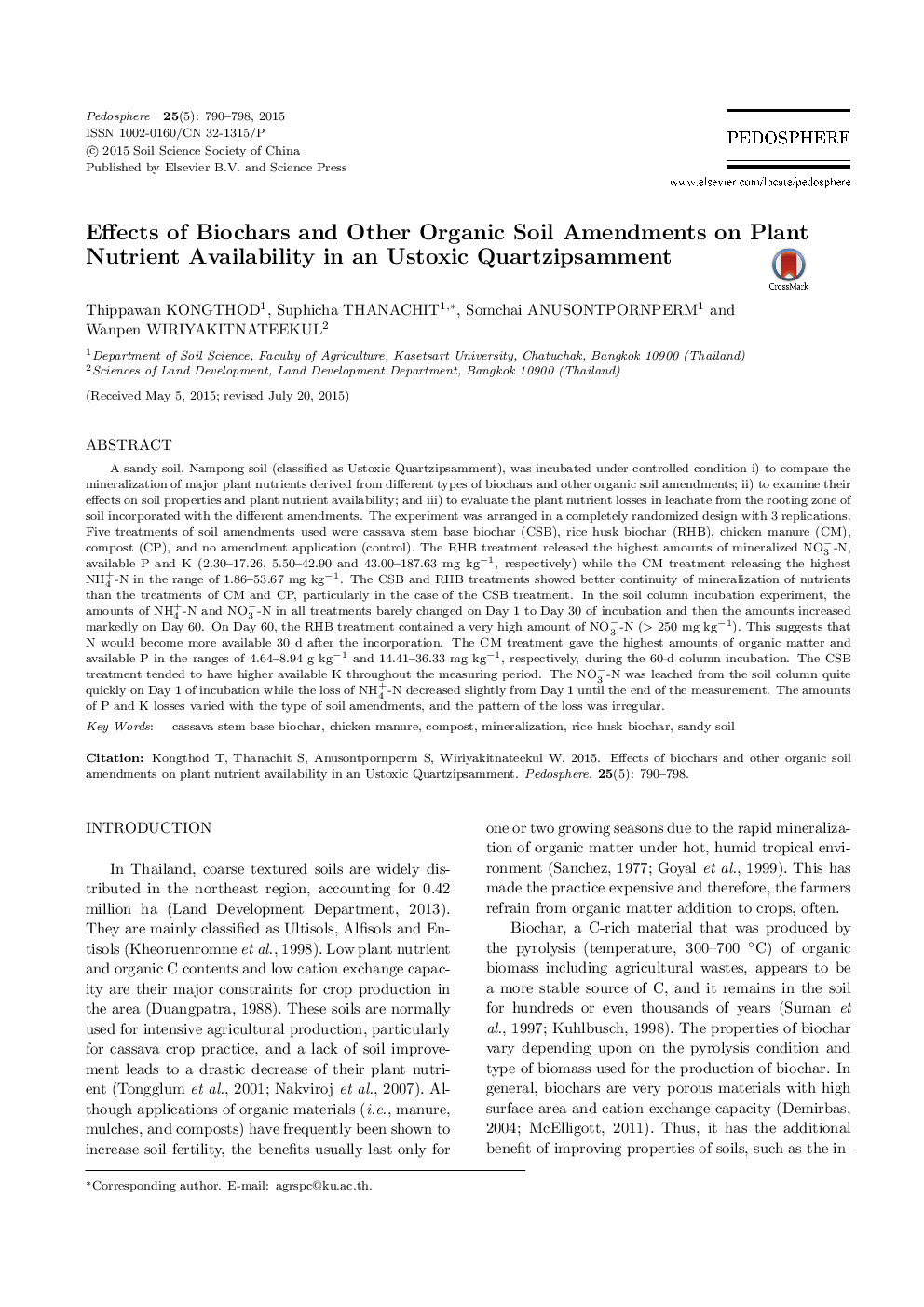| کد مقاله | کد نشریه | سال انتشار | مقاله انگلیسی | نسخه تمام متن |
|---|---|---|---|---|
| 4581317 | 1333693 | 2015 | 9 صفحه PDF | دانلود رایگان |
A sandy soil, Nampong soil (classified as Ustoxic Quartzipsamment), was incubated under controlled condition i) to compare the mineralization of major plant nutrients derived from different types of biochars and other organic soil amendments; ii) to examine their effects on soil properties and plant nutrient availability; and iii) to evaluate the plant nutrient losses in leachate from the rooting zone of soil incorporated with the different amendments. The experiment was arranged in a completely randomized design with 3 replications. Five treatments of soil amendments used were cassava stem base biochar (CSB), rice husk biochar (RHB), chicken manure (CM), compost (CP), and no amendment application (control). The RHB treatment released the highest amounts of mineralized NO−3-N, available P and K (2.30–17.26, 5.50–42.90 and 43.00–187.63 mg kg−1, respectively) while the CM treatment releasing the highest NH−3-N in the range of 1.86–53.67 mg kg−1. The CSB and RHB treatments showed better continuity of mineralization of nutrients than the treatments of CM and CP, particularly in the case of the CSB treatment. In the soil column incubation experiment, the amounts of NH+4-N and NO−3-N in all treatments barely changed on Day 1 to Day 30 of incubation and then the amounts increased markedly on Day 60. On Day 60, the RHB treatment contained a very high amount of NO−3T-N (> 250 mg kg−1). This suggests that N would become more available 30 d after the incorporation. The CM treatment gave the highest amounts of organic matter and available P in the ranges of 4.64–8.94 g kg−1 and 14.41–36.33 mg kg−1, respectively, during the 60-d column incubation. The CSB treatment tended to have higher available K throughout the measuring period. The NO−3-N was leached from the soil column quite quickly on Day 1 of incubation while the loss of NH+4-N decreased slightly from Day 1 until the end of the measurement. The amounts of P and K losses varied with the type of soil amendments, and the pattern of the loss was irregular.
Journal: Pedosphere - Volume 25, Issue 5, October 2015, Pages 790-798
